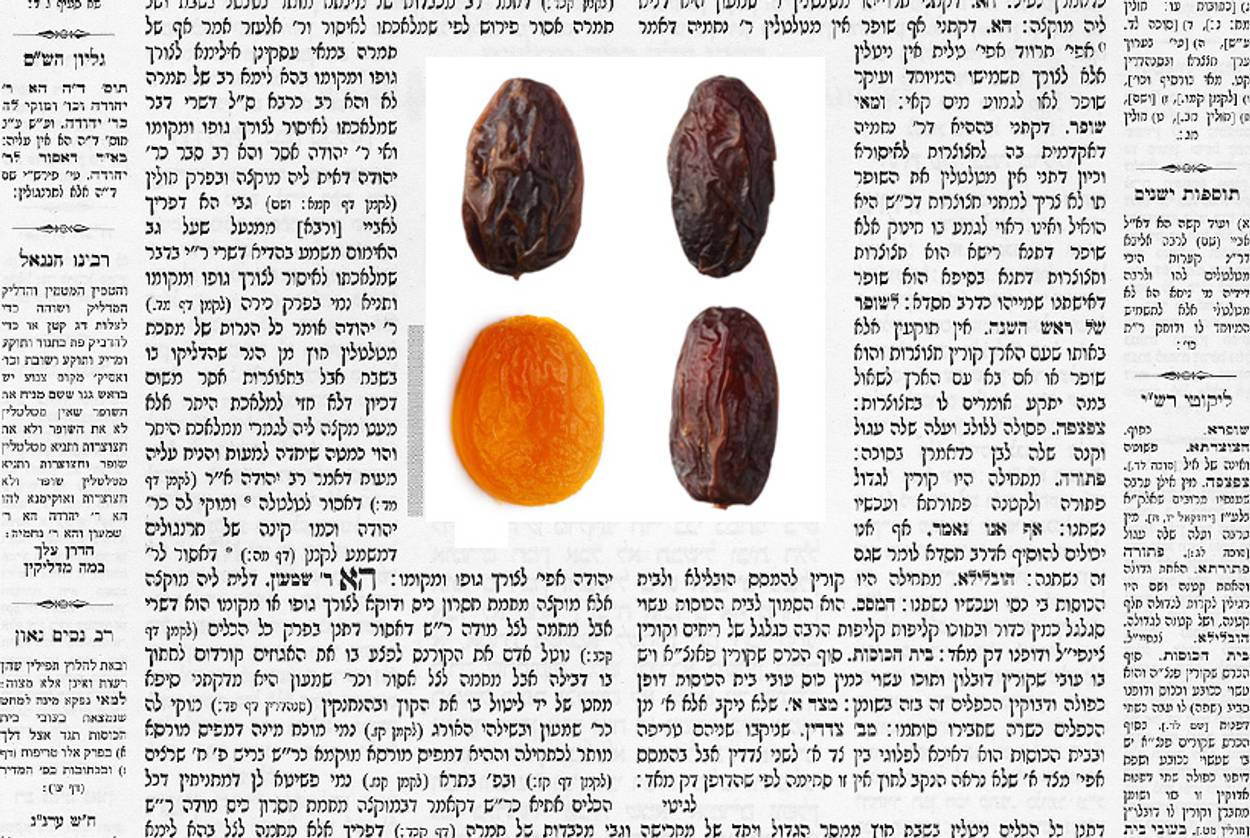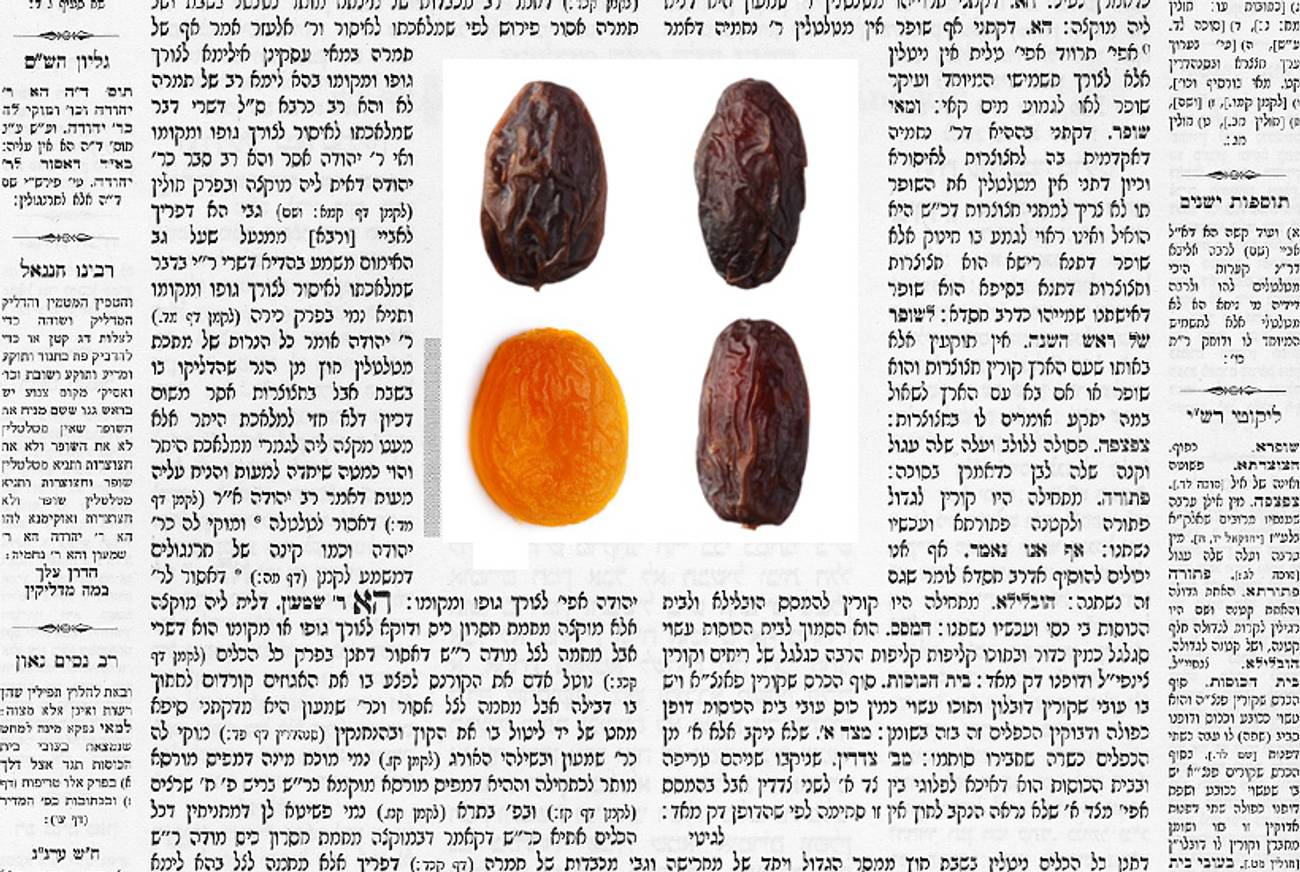Which Is More Sacred: a Festival or Shabbat? A Mitzvah or Money?
With great metaphysical creativity, Talmudic rabbis probe the exact limits of comparison and analogy




Literary critic Adam Kirsch is reading a page of Talmud a day, along with Jews around the world.
This week’s Daf Yomi reading brought us to the fifth and final chapter of Tractate Beitzah, a relatively brief tractate that has dealt with rules and restrictions that apply on festivals other than Shabbat. The general principle that the rabbis establish is that festivals are subject to all the same prohibitions as Shabbat. The one exception has to do with food preparation: Processes directly related to the preparation of meals on the festival are allowed, whereas the same processes would be forbidden on Shabbat.
Still, the exact differences between festival behavior and Shabbat behavior can be more complicated than that principle suggests. Take the example offered at the beginning of chapter 5, in Beitzah 35b. Evidently, in Talmudic times it was common for houses to have a skylight and for people to set out produce to dry on the roof surrounding the opening. What if you have your dates spread out to dry on a festival, and suddenly a storm cloud blows in—are you allowed to rescue the fruit, or would carrying it down through the skylight be considered a forbidden labor? On Shabbat, carrying the fruit inside would clearly be prohibited; but on a festival, the Mishna says, this is allowed.
But exactly how much fruit, the Gemara wonders, can be moved in this way? For an answer, the rabbis employ their favorite strategy of analogy with another area of law. On Shabbat, there is a rule that states that if it’s necessary to clear space in the study hall in order to facilitate Torah study, one may move a small amount—four or five sacks’ worth of material—but not everything in the building. This seems to offer a rule of thumb that can be applied to the question of bringing fruit in through the skylight: Four or five sacks would be the maximum that you can save in this way.
Analogies, however, are never perfect, and one of the commonest activities in the Talmud, as I have come to recognize, is probing the exact limits of a comparison. After all, the two situations—the study hall and the roof—involve different motives; you clear out the study hall to facilitate a mitzvah, while you clear the roof in order to avoid property damage and financial loss. Which of these is a more pressing excuse for violating the festival? If you say that facilitating a mitzvah is more pressing, then perhaps you should not be able to clear four or five sacks of fruit from the roof, but only a lesser amount. On the other hand, if you say that financial loss is more important, then you should be able to carry even more than five sacks.
Or perhaps there is still another difference at play here—the difference between a festival and Shabbat. This, too, is a distinction that can cut both ways, depending on which rabbi you listen to. On the one hand, Shabbat is more sacred than a festival, so the prohibitions on any given labor should be stricter on Shabbat than on the holiday. At the same time, the rabbis reason, the very fact that the Jews are so mindful of that distinction might lead them to legislate more strictly on a festival. That is, the Jews can be trusted not to violate Shabbat, but they need extra pressure to keep them in line on a holiday. In this particular case, the various factors are so evenly balanced that the rabbis themselves can’t come to a decision, and so they resort to the formula “Let it stand.” We don’t learn whether you can carry five sacks of fruit on a holiday, or more or less. Yet it is highly characteristic of the Talmud that it reproduces the whole intricate debate leading up to this impasse: The intellectual process is more significant than the legal result.
Later, in Beitzah 36b, the rabbis introduce a new category of restriction. We already know that some labors are prohibited by Torah law and some by rabbinic law. Now we meet a third type: shevut, or “rest,” activities that are banned because they violate the restful spirit of the holiday. These include potentially rowdy behaviors such as climbing a tree, swimming, clapping, and dancing. The Talmud doesn’t explicitly say as much, but these all strike me as the kind of thing children would like to get up to on a holiday, and perhaps it is children in particular who have to be reminded of the need for shevut. Adults are usually glad to have a day of rest, to escape from work and other responsibilities; for children, imposed rest is more like a torment.
It is when the rabbis reach the subject of boundaries that the discussion becomes most interesting and complex. In Tractate Eruvin, we learned in enormous detail the laws governing how far a person can walk on Shabbat; and the same 2,000-cubit boundary (about 3,000 feet) applies on a festival. Now in Beitzah the Talmud takes up the theoretically difficult question of whether objects, too, have boundaries. Ordinarily, any object can only be moved as far as its owner can walk: “The status of animals and vessels on festivals is as the feet of their owner,” to use the Talmud’s idiom.
But what if an item is borrowed on a festival: Does it follow the “feet” of the lender or the borrower? The mishna says that an item is restricted by the boundary of the person who owned it when the holiday began. If the lender agreed to loan the item before the holiday begins but only actually delivered to the borrower on the holiday, then the borrower is the legal owner and the item follows his feet—it can go anywhere he goes on the holiday. If, however, the loan is not agreed on until after the holiday has begun, then even after the item is delivered to the borrower, it must follow the lender’s feet, since he was the official owner when the holiday started.
Things become trickier—and, for the rabbis, more interesting—when it comes to joint ownership. Say that two people form a partnership to buy a barrel of wine together, and then they decide to divide up the wine on a festival. Does the wine have to remain within 2,000 cubits of its original starting place on the holiday, or does it “follow the feet” of each of the owners, so that one partner could take his share to the north and the other to the south? And what if the item bought in partnership was an animal, and the joint owners want to slaughter it and share out the meat: What is the rule in that case?
One obvious response to such questions is that it would be a lot easier to simply wait until the festival was over. How often, one might ask, did the wine-barrel problem actually come up in daily life? But here, as often, what interests the rabbis is not a practical question but a theoretical one. In this case, it is the question of “retroactive designation.” If something is jointly owned, and then it is divided up among the owners, does the law hold that each owner is considered retroactively to have owned the part that became his share? Or do the shares not take effect until the division is actually made? And what if the item at issue is something like a liquid, which has no separate parts, or a living animal, which can’t be divided into parts without killing it?
Different rabbis have different views on retroactive designation. According to Rabbi Oshaya, it is valid: If two people divide up the contents of a wine barrel, each person’s share then “follows his feet,” because the wine is considered to have been his even when it was mixed up in the barrel. Rabbi Yochanan disagrees: He doesn’t believe in retroactive designation, so from his point of view the wine must remain within the limits shared by both owners on the holiday.
To illustrate the concept, the Gemara turns to another, related area of law: the ritual impurity of corpses. “If there is a corpse in a house that has many entrances,” the law holds, “all the entrances are ritually impure.” This is because the corpse might pass through any of the entrances on its way out of the house, and so they are all considered potentially tamei. Once the corpse is actually taken out, however, the tumah only affects the actual entrance used, and the others go back to being ritually pure. Indeed, it’s enough simply to mentally designate one of the entrances as the one that will be used to transport the corpse, in order to remove impurity from all the others. (I’m reminded, as I have been before in the Talmud, of Schrodinger’s Cat: As in quantum mechanics, potentialities don’t turn into actualities until they are observed.)
Now imagine that one of the doorways of the house had a bowl sitting in it. During the time that the doorway was potentially a means of egress for a corpse, it was tamei, and so the bowl in it also became tamei. Then the corpse actually passes out through a different doorway, and this doorway becomes tahor, ritually pure, again. What now is the status of the bowl? Is it still tamei, or does it become tahor along with the doorway? This is another way of stating the problem of retroactive designation. Does the doorway’s ritual purity get reinstated retroactively, or do we hold that it was actually impure for a time, and so the bowl in it remains impure too? Here, again, the answer is a matter of dispute: Rabbi Oshaya holds one way, Rabbi Yochanan the other.
Finally, the rabbis take up another theoretical problem, this one having to do with the ontological status of fire. A piece of coal, we learn on Beitzah 39a, “is as the feet of its owner”: Whoever owns it when the festival begins, it must remain in that person’s boundary until the holiday ends. But say that someone has a piece of fiery coal and you light your candle from it. Does the flame of your candle have to remain within the same boundaries as the piece of coal? That is, is a fire an attribute of its fuel, or is it an independent entity? The answer, the Gemara explains, is that fire is considered its own category, not an ordinary object but a kind of bodiless quality that cannot actually belong to anyone. Indeed, you could even light a candle at a fire used for pagan idol worship, since the flame is not considered as the property of the idol-worshipper. What we see here is an acknowledgment that fire is not quite a substance, in the Aristotelian system of substances-and-accidents that governed the rabbis’ scientific understanding. It is at the points where that system comes under strain that the rabbis’ metaphysical and legal creativity reaches its heights.
***
To read Tablet’s complete archive of Daf Yomi Talmud study, click here.
Adam Kirsch is a poet and literary critic, whose books include The People and the Books: 18 Classics of Jewish Literature.
Adam Kirsch is a poet and literary critic, whose books include The People and the Books: 18 Classics of Jewish Literature.